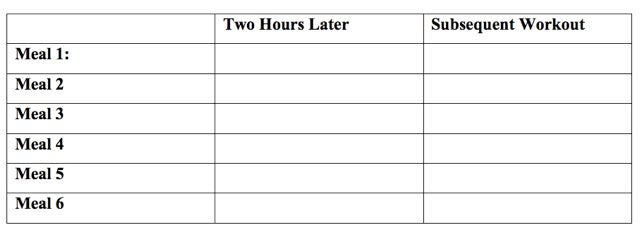New perk! Get after it with local recommendations just for you. Discover nearby events, routes out your door, and hidden gems when you sign up for the Local Running Drop.
Matt Fitzgerald explains why it can be beneficial to use a food journal to keep you fueled for all of your workouts.
Written by: Matt Fitzgerald
A food journal is a simple tool that you can use to identify and address problems affecting your training and racing that could have a nutritional cause. When keeping a food journal you write down everything you eat and drink and when you eat and drink it. This is the information you need to identify potential causes of any performance, recovery or injury challenges you are having.
Sometimes it’s easy to link a problem back to a nutritional cause. For example, in keeping a food journal you might discover that you are simply eating a lot more than you thought you were, a fact that quickly explains why you’re having trouble getting down to your preferred racing weight. (Believe it or not, the average person eats roughly 20 percent more than he or she thinks. The chief value of keeping a food journal is that it eliminates the “disconnect” between how we think we eat and how we really do.)
In other cases it might take some guesswork and experimentation to identify the nutritional cause of a particular problem—or whether the cause is nutritional at all. For example, fatigue that affects your performance could be caused by everything from dehydration to iron deficiency to inadequate carbohydrate intake to sleep deprivation. To solve the mystery, use this Nutrition Troubleshooter to come up with a best guess about the cause of your current problem, change your diet appropriately (with the help of a certified sports nutritionist or your physician, as necessary), and monitor the results. If it doesn’t pan out, try something else, or get a sports nutritionist or your physician involved if you haven’t already.
Here is an example of a simple food journal format. Use it anytime you want to investigate how your diet is affecting your health and running. It usually takes a minimum of three days to identify a pattern. If you make a change to your eating habits based on a pattern you observe, continue journaling for at least three more days to determine the effects of the change.
If you eat fewer than six meals in a day, leave the irrelevant boxes blank and record your sleep quality in the box to the right of your last meal of the day. Likewise, leave all of the boxes blank in the “Subsequent Workout” column except the one that shares a row with the meal that preceded your daily workout.
